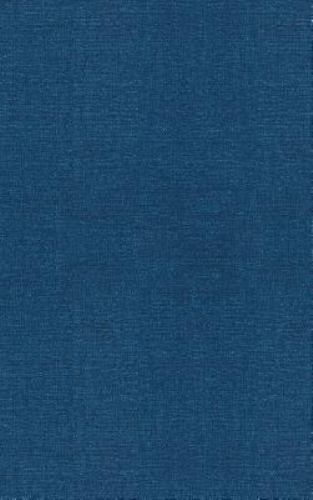Picture 1 of 1

Stock photo

Picture 1 of 1

Stock photo

Leonardo Pisano (Fibonacci) : The Book of Squares by L. E. Sigler (1987, Hardcover)
B
Brenham Book Company (1367)
94.7% positive feedback
Price:
$62.57
+ $4.25 shipping
Returns:
30 days returns. Buyer pays for return shipping. If you use an eBay shipping label, it will be deducted from your refund amount.
Condition:
The Book of Squares by Fibonacci is a gem in the mathematical literature and one of the most important mathematical treatises written in the Middle Ages. The book was dedicated and presented to the Emperor at Pisa in 1225.
Oops! Looks like we're having trouble connecting to our server.
Refresh your browser window to try again.
About this product
Product Identifiers
PublisherElsevier Science & Technology
ISBN-100126431302
ISBN-139780126431308
eBay Product ID (ePID)53526
Product Key Features
Number of Pages144 Pages
LanguageEnglish
Publication NameLeonardo Pisano (Fibonacci) : the Book of Squares
Publication Year1987
SubjectHistory & Philosophy, Number Theory, Science & Technology
TypeTextbook
Subject AreaMathematics, Biography & Autobiography
AuthorL. E. Sigler
FormatHardcover
Dimensions
Item Height0.2 in
Item Weight14.4 Oz
Item Length9 in
Item Width6 in
Additional Product Features
Intended AudienceScholarly & Professional
LCCN86-017336
Dewey Edition19
IllustratedYes
Dewey Decimal510
Table Of ContentPrologue. Introduction. Proposition 1: Find Two Square Numbers Which Sum to a Square Number. Proposition 2: Any Square Number Exceeds the Square Immediately Before It by the Sum of the Roots. Proposition 3: There is Another Way of Finding Two Squares Which Make a Square Number with Their Sum. Proposition 4: A Sequence of Squares is Produced from the Ordered Sums of Odd Numbers Which Run from 1 to Infinity. Proposition 5: Find Two Numbers So That the Sum of Their Squares Makes a Square Formed by the Sum of the Squares of Two Other Given Numbers. Proposition 6: A Number is Obtained Which is Equal to the Sum of Two Squares in Two, Three, or Four Ways. Proposition 7: Find in Another Way a Square Number Which is Equal to the Sum of Two Square Numbers. Proposition 8: Two Squares Can Again be Found Whose Sum Will be the Square of the Sum of the Squares of Any Two Given Numbers. Proposition 9: Find Two Numbers Which Have the Sum of Their Squares Equal to a Nonsquare Number Which is Itself the Sum of the Squares of Two Given Numbers. Proposition 10: Find the Sum of the Squares of Consecutive Numbers from the Unity to the Last. Proposition 11: Find the Sum of the Squares of Consecutive Odd Numbers from the Unity to the Last. Proposition 12: If Two Numbers are Relatively Prime and Have the Same Parity, Then the Product of the Numbers and Their Sum and Difference is a Multiple of Twenty-Four. Proposition 13: The Mean of Symmetrically Disposed Numbers is the Center. Proposition 14: Find a Number Which Added to a Square Number and Subtracted from a Square Number Yields Always a Square Number. Proposition 15: Square Multiples of Congruous Numbers are Congruous Numbers. Proposition 16: Find a Congruous Number Which is a Square Multiple of Five. Proposition 17: Find a Square Number Which Increased or Diminished by Five Yields a Square Number. Proposition 18: If Any Two Numbers Have an Even Sum, Then the Ratio of Their Sum to Their Difference is Not Equal to the Ratio of the Larger to the Smaller. Proposition 19: Find a Square Number for Which the Sum and the Difference of It and Its Root is a Square Number. Proposition 20: A Square Number is Found Which When Twice Its Root is Added or Subtracted Always Makes a Square Number. Proposition 21: For Any Three Consecutive Odd Squares, the Greatest Square Exceeds the Middle Square by Eight More Than the Middle Square Exceeds the Least Square. Proposition 22: Find in a Given Ratio the Two Differences Among Three Squares. Proposition 23: Find Three Square Numbers So That the Sum of the First and the Second As Well As All Three Numbers are Square Numbers. Proposition 24: The Question Proposed by Master Theodore. References Index.
SynopsisThe Book of Squares by Fibonacci is a gem in the mathematical literature and one of the most important mathematical treatises written in the Middle Ages. It is a collection of theorems on indeterminate analysis and equations of second degree which yield, among other results, a solution to a problem proposed by Master John of Palermo to Leonardo at the Court of Frederick II. The book was dedicated and presented to the Emperor at Pisa in 1225. Dating back to the 13th century the book exhibits the early and continued fascination of men with our number system and the relationship among numbers with special properties such as prime numbers, squares, and odd numbers. The faithful translation into modern English and the commentary by the translator make this book accessible to professional mathematicians and amateurs who have always been intrigued by the lure of our number system.
LC Classification NumberQA32.F4813 1987
All listings for this product
Be the first to write a review

























